Measuring the microphone
Let's get to the microphone and its quality. In terms of characteristic, it is a kidney, which at least intheme of lateral and above all rear noises. However, you have to be careful in which direction you align the gooseneck microphone. But this can also be felt by the pop protection, because the front of the used electret capacitor microphone capsule is protected with a grid.
The low-cut grips below the upper bass really exemplary, whereby the curve from approx. 80 Hz falls off really steeply. The same applies to the tweeter, because from approx. 8 KHz here, too, the curve falls into nowhere as a steep flank. This is pleasing and can hardly be solved better. The sensitivity is also sufficient, even on the onboard sound.
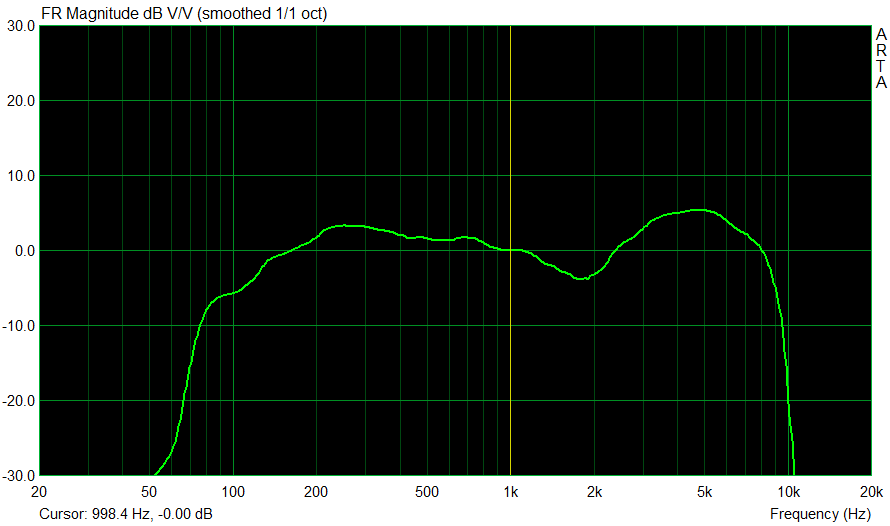
The self-noise is almost always surpassed by the rest of the transmission chain and thus nothing that would be audibly noticeable.
Measurement of headphone frequency history
Let's move on to measuring the quality of the headphones. I have again normalized the frequency curve at 1 KHz to 0 dB, so that on the one hand one can evaluate the overall course with all encores and frequency waste and on the other hand not completely loses the possibility of comparison to previous measurements. But it is still different, because the smoothing (1/1 octave) is supplemented by the almost unsmoothed representation (1/24 octave). All of this looks clearly "more hibbeliger", of course, but also fits much better with reality. Because one thing is also clear: it does not exist, the ideal curve.
The smoothed curve looks really good and is between approx. 50 Hz and 4 KHz even approximately linear (+/-3dB tolerance). The bass is still well measurable and audible up to 20 Hz (and below). What is striking, however, is the Beyer-typical peak in the high-frequency range. To understand this, however, we should better look at the unsmoothed curve.
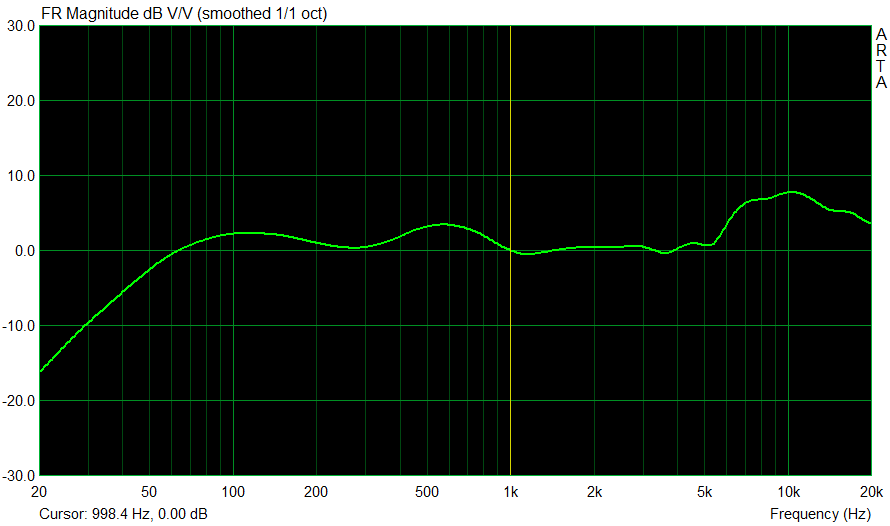
The "flattery" in super high tone is normal, but here certain peaks are (intentionally) more pronounced than with other headsets. Instead of dull playback, the MMX 300 is rather crispy in the tweet, i.e. partially high-altitude. This affects us at approx. 5.5 and later also at 8 to 9 KHz, so it pushes hissing (sibilants) and various blow-out noises from instruments a bit forward. You can like this type of game, but you don't have to. But more on that.
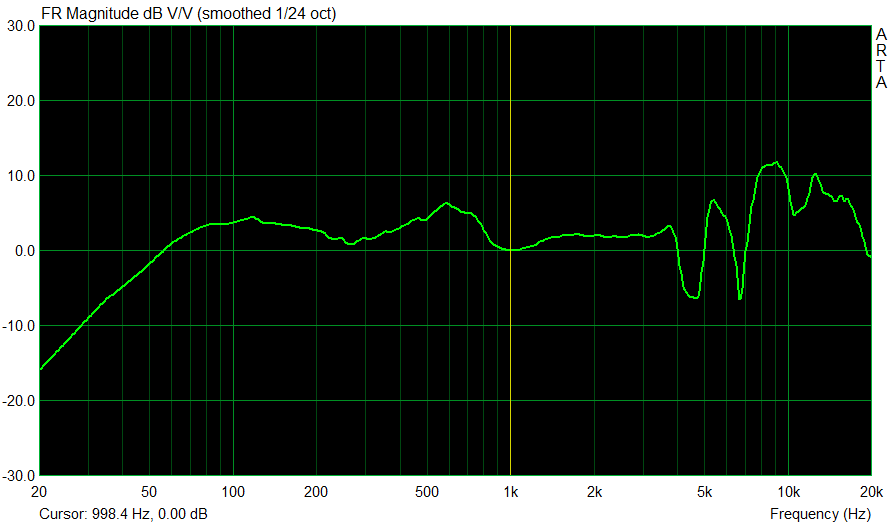
Cumulative Spectra (CSD and SFT)
The cumulative spectrum denotes different types of diagrams that show time-frequency properties of the signal. They are generated by successive application of the Fourier transformation and suitable windows to overlapping signal blocks. These analyses are based on the frequency response diagram already shown above, but also contain the element time and now show as a 3D graphic ("waterfall") very clearly how the frequency response develops over time after the input signal stopped. In colloquial terms, such a thing is also called "end" or "swingout".
Normally, the driver should also stop as fast as possible after the input signal has been dropped. However, some frequencies (or even entire frequency ranges) will always subside slowly and then continue to appear in this chart as longer-lasting frequencies on the timeline. This is a good way to see where the driver has glaring weaknesses, perhaps even "squealing" or where, in the worst case, resonances may occur and disturb the overall picture.
I will now test two types of cumulative spectrum:
Cumulative Spectral Decay (CSD)
Cumulative spectral decay (CSD) uses the FFT and a modified rectangular window to analyze the spectral drop of the pulse response. It is mainly used to analyze the speaker response. The CSD typically uses only a small FFT block shift (2-10 samples) to make resonances more visible throughout the frequency range, making it a useful tool for detecting the resonant of the converter.
The picture of the MMX300 is good to very good, but unfortunately not quite perfect. It can be seen very clearly that in the range of approx. 800 Hz light resonances or vibrations occur. This could certainly be dampened a little more, but subjectively later on hardly any weight when listening. At approx. 5.5 KHz there are also slight swingers in the "Beyer-Peak", which, however, after approx. 1.5 ms are also history. This is measurable, but rather less disturbing.
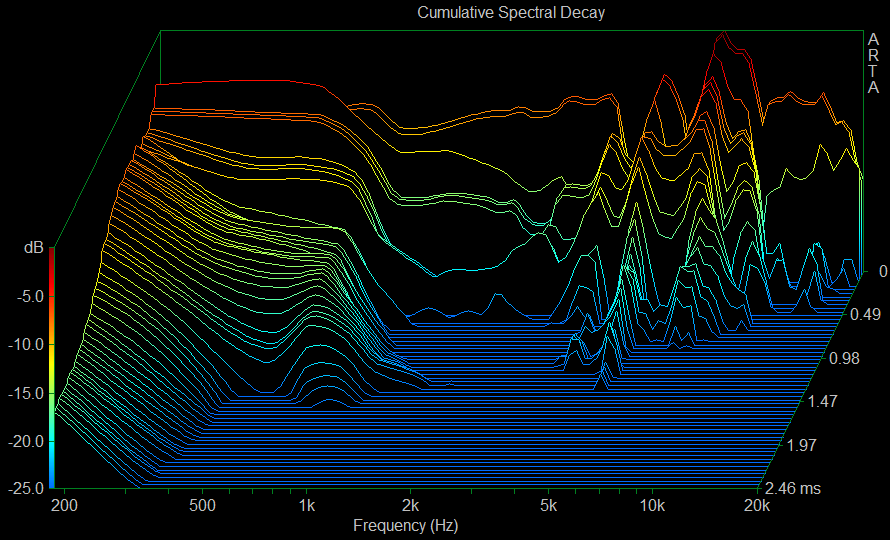
Short-time Fourier Transform (STF)
The Short-Time Fourier Transformation (STF) uses the FFT and Hanning windows to analyze the time-varying spectrum of recorded signals. In general, a larger block shift (1/4 to 1/2 of the FFT length) is used to analyze a larger part of the time-variable signal spectrum, whereby one gets closer to the fields of application such as language and music.
In the STF spectrum, we now also see very nicely the rather balanced work of the drivers, who do not afford any real weaknesses in any frequency range. By the way, we see again that the sound at approx. 5.5. and 8 KHz, as well as just below 18 KHz "stays still", which also applies again for the range just below 1 KHz. This produces a rather soft and with the small, jagged high-tone whips still crisp feeling in the foundation, which can not only be enjoyed from the point of view of a mainstream listener.
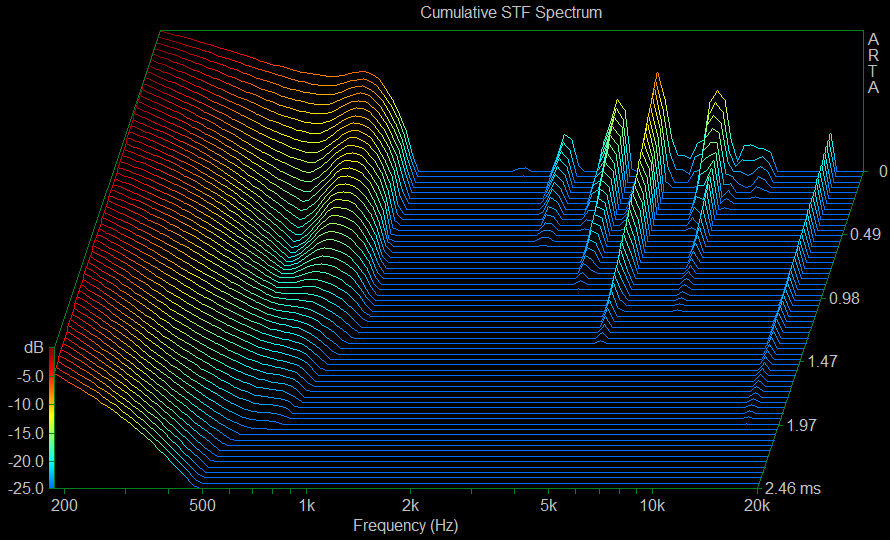
What remains as a summary is a good settling behavior, a good performance and the fact that one finds only slight resonances. This is not a bad requirement for a gaming headset and you can also make sure that music will succeed quite well. In order to be able to estimate how much amplifier power you need for a real full control, I inserted the following curve. The MMX 300 requires approx. 1 mW for 96 dB sound pressure (SPL = Sound Pressure Level) at 1 KHz.
Because one thing is clear: we also need the Peak-SPL for good dynamic reproduction without distortions! In order, for example, to To get the much touted 115 dB (85 dB average + 30 dB peak surcharge), you would need with the MMX 300 already around 70 mW, which the onboard sound usually can not deliver. You can also find out more about this in the basic article "Disadvantages of onboard sound – influence of graphics card, headphone sensitivity and motherboard layout ".
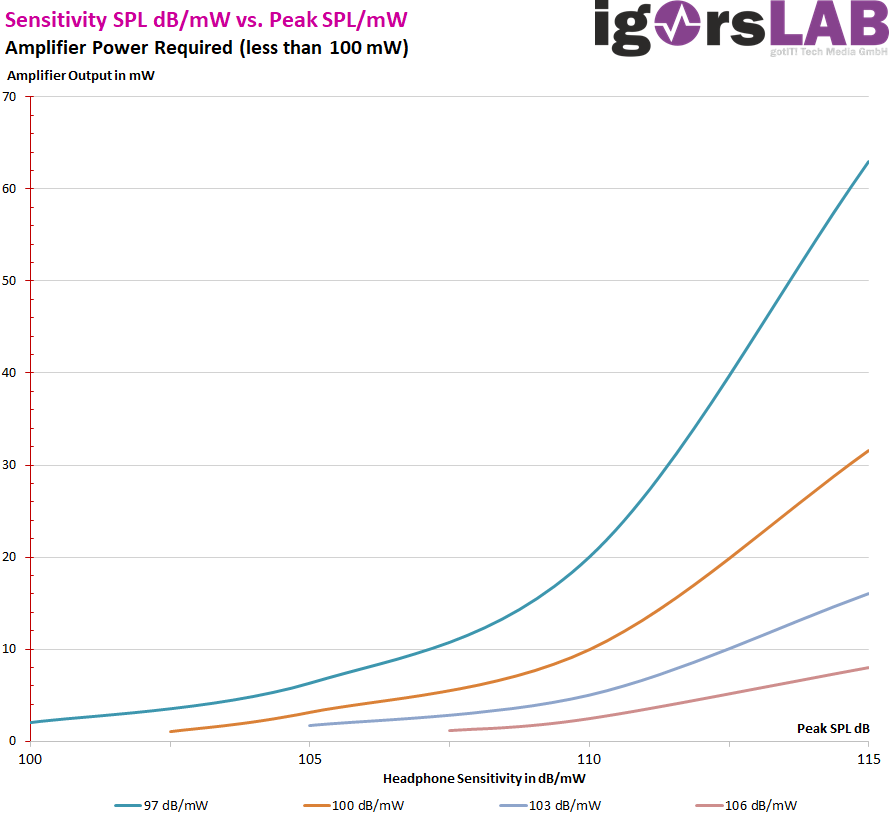
Subjective listening experience
Now let's test subjectively what you get offered in the original. By the way, I used the headset again and again for almost 7 months over an entire evening and before this test locked it again in the measuring room for another 4 days, as well as tormented with a selected sound loop to scrub again hours of operation. What are not all for our die-hard recording fanatics among readers? 🙂
Bass
Test the lowest bass in the subcontraoctave (16.4 Hz to 32.7 Hz) with a recording of Bach's Toccata and Fugue in D minor (19 and 25 Hz) and the Festival Overture 1812 by Tchaikovsky (10 Hz and 12.5 Hz). The same applies to the lower ranges of the contraoctothe (32.7 to 65.4 Hz). The big bass drum (kick drum), which in the U-music is a welcome companion and usually on approx. 55 to 60 Hz, this assessment will then be rounded off.
The bass is voluminous, but also without overpacing, and plays pleasantly deep. The bass drum is very good in the lining, but there is nothing roaring, but everything remains balanced in total, reasonably dry and differentiated enough. In gaming and in films with good effect track, e.g. Explosions superbly depicted without breaking the limits of level strength. Reserves are always available. whereby the indication of 96dB for an mW output power also makes it clear that you need significantly more power to fully control this headset (see above).
The upper bass up to 150 Hz, in which also the Great Octave (65.4 to 130.8 Hz) is located, houses the basic language frequency of the male voice and decides very strongly on the true-to-life reproduction of male vocals.
Male vowel seem very large-volume, but thank Fully not dominant. The voices harmonize very well with the overall picture and overall the whole foundation looks solid, but also a bit boring. So far, it is a rather determined journeyman who does not want to stand out negatively at any price in the world. This can also be seen and evaluated positively.
Frequency range
The lower middles (also basic tone range) are approx. 150 to 400 Hz. Together with the already mentioned upper bass, this area plays a very important role for the subjectively perceived heat or bass. Fullness of the sound. The basic language frequency of female voices can be found in this area.
Female vocals also sound pleasant and full. They also harmonize absolutely conflict-free with the male vocals and thus form a very well balanced team. The basic tones of many instruments also fall within this area. In fact, the headset is almost mercilessly honest, because it reproduced everything that is even somehow there. But it is precisely this kind of control-inertia that is not uncommon in gaming.
The upper mids between 400 Hz and about two KHz contain a mark at a KHz, which is still considered a reference for many measurements. Unfortunately, this is often noticeable with cheaper devices, as manufacturers often try to overemphasize this frequency. This area does not play an insignificant role in gaming either, and balanced playback contributes significantly to good spatial resolution.
The depth graduation is good, which doesn't really surprise me, because this headset is actually more of a studio headphones with microphone appendix. The headset shows that it is not unjustly fishing for customers above the 200 euro mark. In contrast to many bling-bling comrades, the monetary demand here is also based on real sonic performance and not only by supposed gaming optics. The resolution is brilliant anyway and everything also seems nicely airy and not even pressed in the beginning. The often-found dent of horror is certainly sought here in vain.
High-pitched range
Between two and about 3.5 KHz, human hearing is most sensitive, especially since this area of the lower heights is responsible for the good overtone reproduction of the human voice. This frequency range is crucial for the recognition of a voice or instrument; in this context, one also speaks of the respective timbre.
Beyerdynamic decides against an otherwise usual overemphasis and instead relies on the good genes of the installed drivers and their tuning. It is enough for a very good and wide stage, as well as an excellent location of individual sources, even if the levels are high in places and many details were otherwise threatened to go down. The MMX 300 manages to save all sound material from drowning and keep it afloat. This, too, has to be achieved first.
The middle heights (3.5 to six KHz) decide on the sound or failure of the speech reproduction as a whole, because the S- and hissing (Sibilants) fall into this range. The upper heights then reach up to approx. ten KHz to move into the super high tone.
The high-frequency design is 5 KHz rather a matter of interpretation and habituation. The high-frequency peaks already mentioned are not without charm, but could also overwhelm weak minds. Sibilants come very clearly, but without letting everything slip into the metallic. For this purpose, the peak is too pointed and narrow. This also applies to the range between 8 and 9 KHz. These are two very contrasting little ice crystals as a counterpoint to the almost too warm feel-good living room.

Summary and conclusion
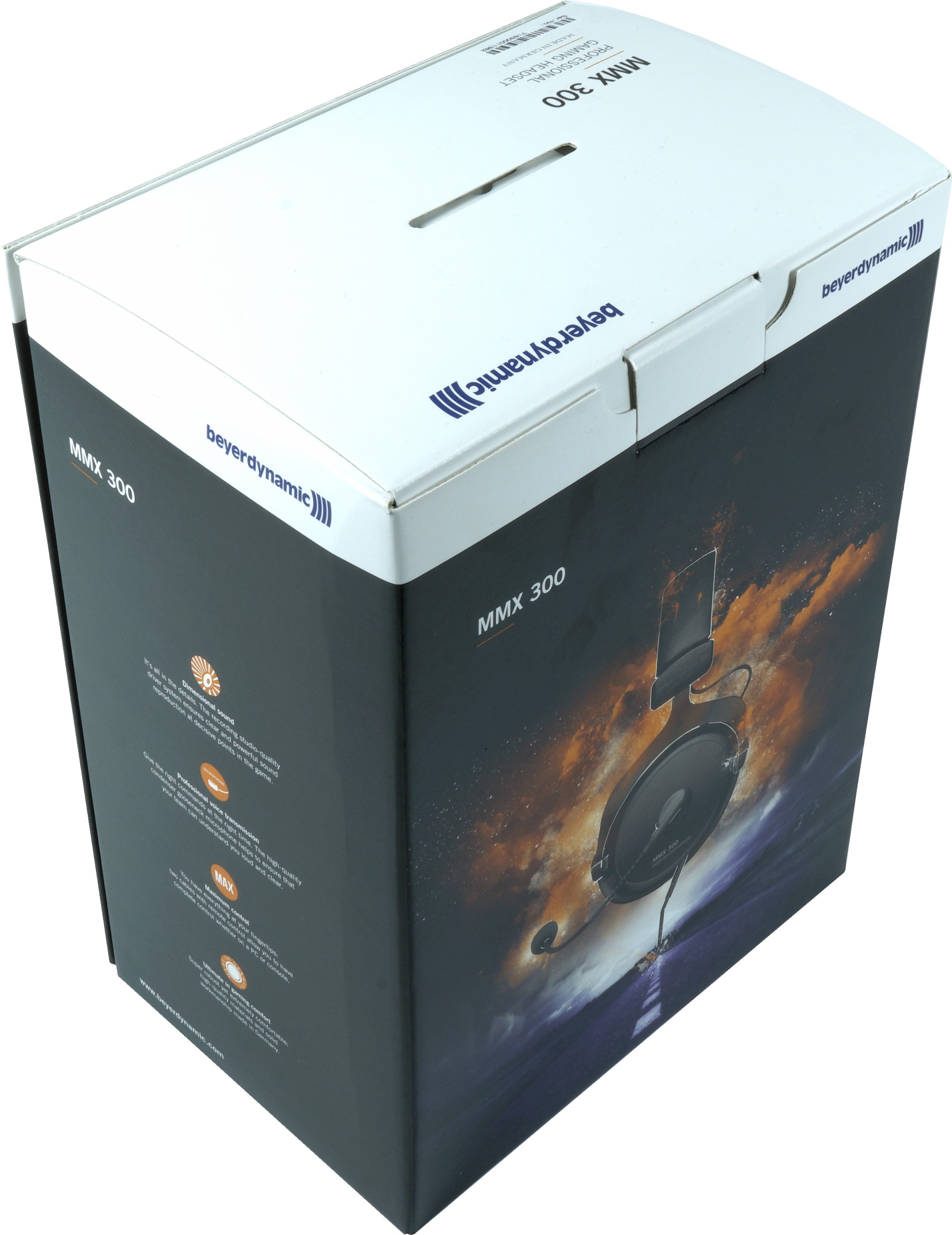 Let's leave aside the surely justified price and concentrate on the essentials, then the Beyerdynamic MMX 300 has to be able to increase again nicely in the second generation. And this without any exaggerated actionism that breaks out on devil come out with all the old and the familiar. No, it's a decent improvement something already very good. This must be admitted without envy.
Let's leave aside the surely justified price and concentrate on the essentials, then the Beyerdynamic MMX 300 has to be able to increase again nicely in the second generation. And this without any exaggerated actionism that breaks out on devil come out with all the old and the familiar. No, it's a decent improvement something already very good. This must be admitted without envy.
Headsets are, of course, always a very subjective matter of interpretation, but the MMX 300 does not polarize, but can actually do almost any favor, which also has the will to listen thoroughly. With superficiality you certainly can't get any further, but if you only have a little patience, you also like such peak stories in the end, which represent a beautiful self-will of the otherwise unspectacular sound structure.
What also pleases is the impeccable seat. The part is in fact the perfect tailored suit for almost every head shape and size, even if the weight is quite neat. But the good and above all vented upholstery compensates for almost everything that could otherwise lead to pressure and sweat. You can also buy them, but first of all also helps washing, because they are removable. This also applies to the padding of the headband. The rest is rather unspectacular, but you can also see that in a positive way.
The Beyerdynamic MMX 300 is in the 2nd Generation exactly what you can recommend as a buying tip without a bad conscience to almost everyone: a solid piece of technology, whose longevity, along with the service and spare parts availability, also justifies the slightly higher purchase price. Because you can have a lot of fun for a very long time. It is almost the slightly more expensive perpetual sucker, but it still exists even if the small and cheap drops have long since been sucked.


































Kommentieren